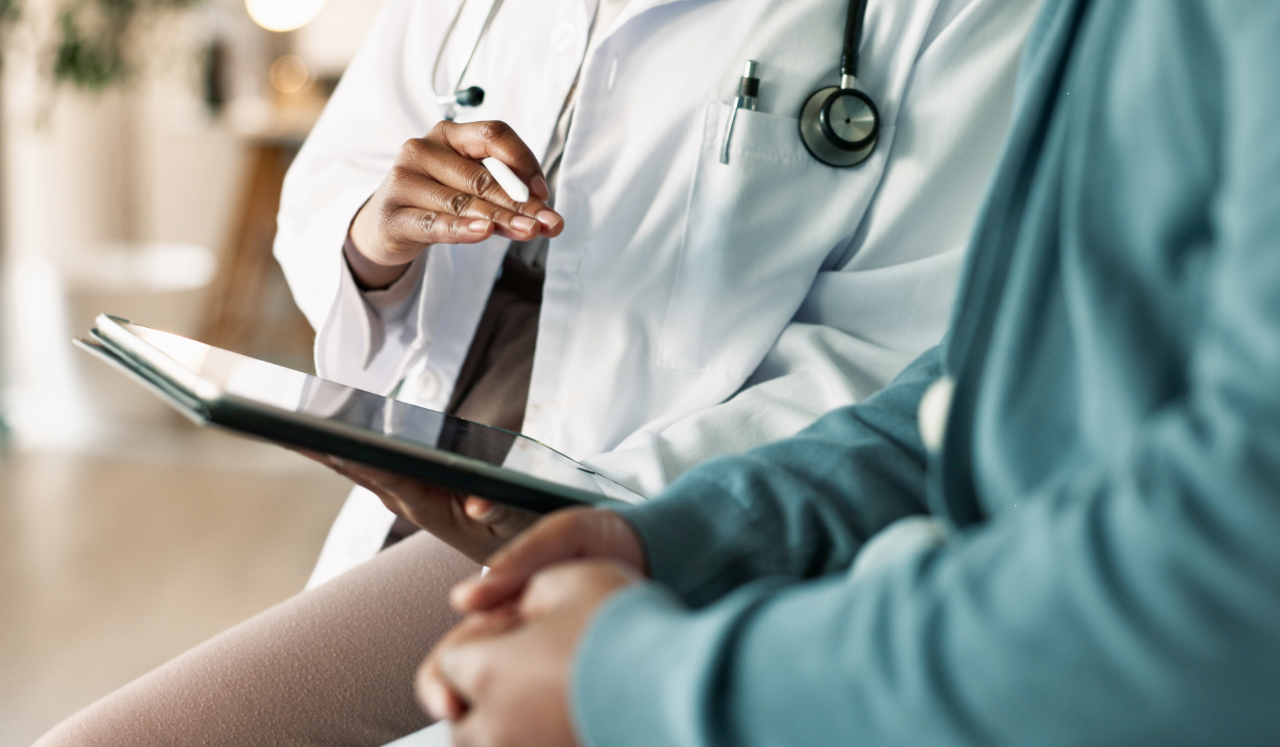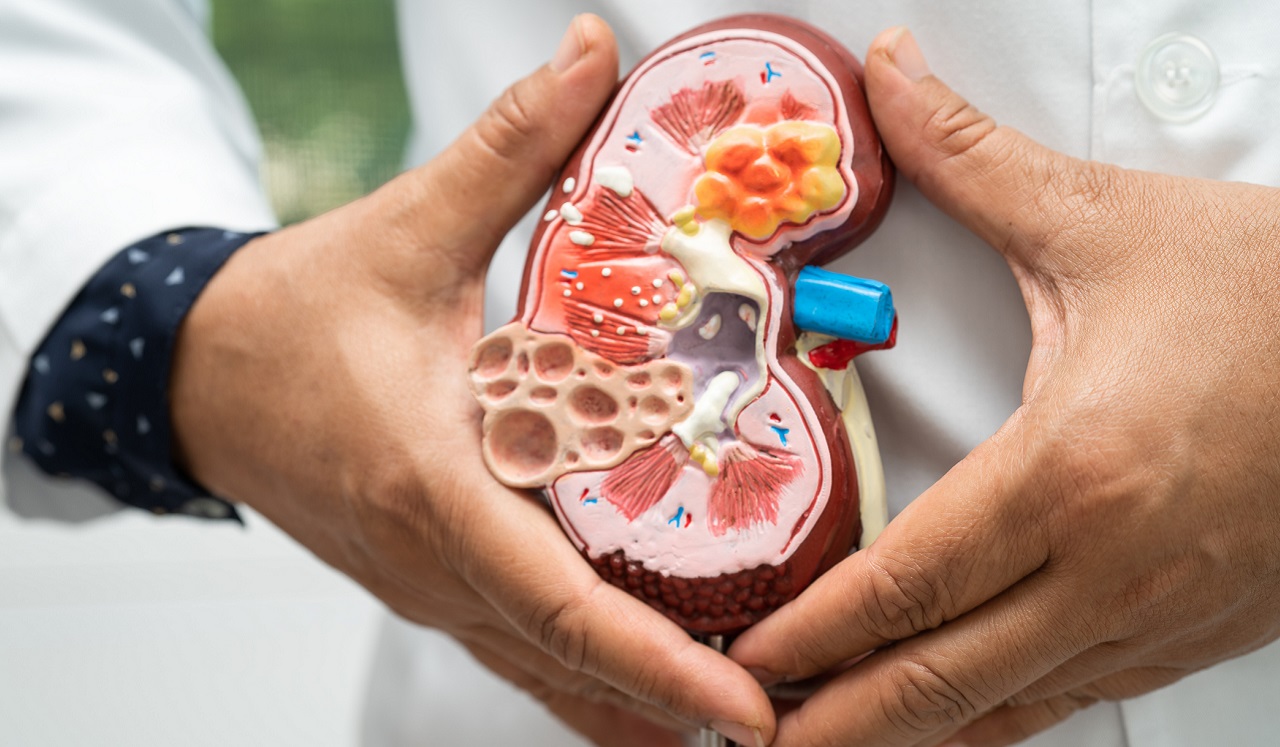It often starts with a sharp pain in the side—one that doesn’t go away when you stretch or shift your weight. For many, it’s the first sign of a kidney stone. And the pain? “Even women who have had multiple children tell me,” says Kelly Caldwell, MD, a urologist with Memorial Hermann Medical Group Memorial City Urology “that the pain of a kidney stone is worse than childbirth.”
Dr. Caldwell breaks down where kidney stones form, how to know if you have one and what steps you can take to prevent or treat them.
Small Stone, Potentially Big Pain
When it comes to kidney stones, there are two places that you’ll find them: in the kidney or the ureter, which is the tube that carries urine from the kidney to the bladder.
Stones that are lodged in the kidney are typically nonobtrusive, which means that a person who has these kinds of stones will most likely never know they have them because this type of stone isn’t painful.
“These nonobstructive kinds of stones are just sitting in the kidney, and most people don't know that they have them until they get a CT scan for some other reason, such as having been in a car accident or to diagnose a gastrointestinal issue,” explains Dr. Caldwell. “Patients with these kinds of stones are typically asymptomatic. Not all of them will require treatment, but it’s good to talk with your physician about your options.”
Stones in the ureter, however, must be addressed. These stones cause an acute obstruction of the kidney and result in severe pain that lands people in the emergency room. Dr. Caldwell says that if you’re experiencing any of the following symptoms, it could be an indication of a ureteral kidney stone:
- Flank pain or pain on your side below the ribs
- Blood in urine
- Nausea and vomiting
- Strong urinary urges and increased frequency
- For men, pain in one testicle
Flank pain is one of the most common symptoms. It usually manifests as a sharp ache in your back that wraps around to the abdomen, toward the groin. Typically, flank pain occurs on one side and does not change—neither increasing nor decreasing—with movement, as compared with back pain or musculoskeletal-related pain, which can change with movement. “If you’re moving around and that worsens the pain, it’s most likely associated with back issues or something going on in the spine,” offers Dr. Caldwell.
Risk Factors for Kidney Stones
Kidney stones are most frequently formed by calcium oxalate or uric acid. Calcium oxalate stones are formed when calcium builds up over time in the kidney; this type accounts for around 90% of kidney stone formation. Some of the causes for these stones include:
- Chronic dehydration
- High-sodium diet
- High amount of dietary oxalate, a molecule found in iced tea, beans, leafy green vegetables and chocolate
- Parathyroid glands that overproduce parathyroid hormone
- High calcium absorption
“When I work up my patients to formally understand why they're making stones, the culprit is usually low urine production,” explains Dr. Caldwell. “Urine output is a direct indicator of hydration status. In fact, people residing in the southern part of the United States frequently have more kidney stone issues, which is why the area is known as the ‘Stone Belt.’ It's hotter here, so staying properly hydrated is an important part of preventing kidney stone formation.”
Additionally, Dr. Caldwell says that calcium overabsorption, often seen when an individual consumes calcium supplements on an empty stomach, can contribute to the formation of calcium oxalate stones. While many people do require these calcium supplements, it is important that they take them on a full stomach and at the recommended dosage.
The less frequent uric acid stone formation occurs in patients who have an acid-base imbalance in their urine. The waste is too acidic, which causes stones to crystallize from uric acid. Stones created this way can be attributed to the consumption of too much animal protein or a gout diagnosis.
The big takeaway is that while some of the causes are genetic, staying properly hydrated and avoiding high-sodium foods—such as fast food and processed foods—can limit your likelihood of developing kidney stones.
Treating Kidney Stones
While a physician can provide guidance on how to tackle nonobtrusive stones that are not causing any symptoms, folks who have ureteral kidney stones will quickly find themselves in the ER because of the pain.
If the stone is a reasonable size (less than 10 mm in diameter) and the patient’s lab results look normal, the individual will most likely be discharged with pain and nausea medication to pass the stone at home. The main recommendations for patients are to consume lots of water and strain their urine to ensure that the stone passes. If the stone hasn’t passed after two weeks or the person finds themselves in excruciating pain, they must return to the hospital for a follow-up procedure. Dr. Caldwell warns that if the stone is not passed within a certain time frame, it’s imperative that the person returns to the hospital or else risk kidney deterioration and failure.
For those individuals not discharged from the ER after an initial event and those who come back after being unable to pass the stone, the treatment involves the following:
- Shock wave lithotripsy. The physician will use sound waves under X-ray guidance to attempt to break kidney stones into small pieces that the patient can then pass.
- A doctor will guide a camera through your ureter to find the stone, blast it with a laser and then retrieve the pieces with a basket.
- Percutaneous nephrolithotripsy. This is a minimally invasive surgery used for larger kidney stones that are picked up on a CT scan. While these stones are nonobtrusive and do not cause pain, a doctor may choose to operate prior to the stone growing larger or passing into the ureter. A surgeon will make an incision on your back into the kidney to remove the stone(s).
Preventing Future Stones
Kidney stones often develop because of chronic dehydration and high sodium intake—two risk factors that are within your control. In other cases, stones may signal an underlying medical issue that needs to be addressed. The difference is why identifying the root cause is key.
“I work with my patients to find things that we can modify to prevent stones from returning,” Dr. Caldwell says. “This could include aggressive encouragement toward dietary modifications or even starting medications to help prevent kidney stone formation. A patient who has had more than one kidney stone in their life really should be undergoing an evaluation to try and slow the process down for them. We may be able to identify something that needs to be treated.”
If you've had a kidney stone before—or suspect you might be at risk—talk to your doctor. Taking preventive steps now can help you stay comfortable, hydrated and stone-free down the road.


